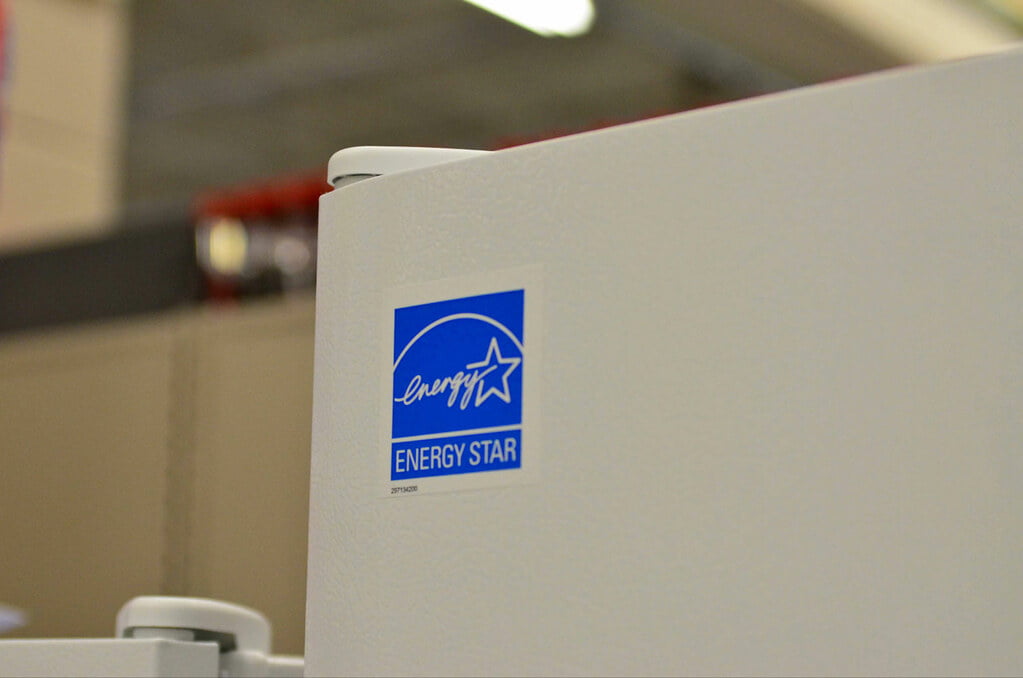Energy Star is a voluntary labeling program introduced by the U.S. Environmental Protection Agency (EPA) and the Department of Energy (DOE) in 1992. The program aims to help consumers identify energy-efficient appliances and products which can help them save money on energy bills and reduce their carbon footprint. In this guide, we will discuss what Energy Star is, the benefits of Energy Star appliances, and how to choose the right appliances for your home.
What is Energy Star?
Energy Star is a certification awarded to appliances and products that meet strict energy efficiency guidelines set by the EPA and the DOE. The program covers various products, including household appliances, electronics, lighting, and building materials. Energy Star-certified products are designed to use less energy, save money on utility bills, and contribute to environmental protection by reducing greenhouse gas emissions.

Benefits of Energy Star Appliances
There are several benefits to choosing Energy Star appliances for your home, including:
- Lower Energy Bills: Energy Star-certified appliances are designed to use less energy than their non-certified counterparts, which can result in significant energy bill savings over time. According to the EPA, Energy Star appliances can save up to 30% on energy costs compared to standard appliances.
- Environmental Benefits: Energy Star appliances help reduce greenhouse gas emissions and other pollutants associated with energy production by consuming less energy. This contributes to a cleaner environment and helps combat climate change.
- Improved Performance: Energy Star appliances are designed to be energy-efficient and deliver better performance. For example, Energy Star-certified washing machines typically have advanced features that ensure thorough cleaning while using less water and energy. Similarly, Energy Star-certified refrigerators are designed to maintain consistent temperatures, reducing the risk of food spoilage.
- Rebates and Incentives: Many utility companies and local governments offer rebates, tax credits, or other incentives for purchasing Energy Star appliances. These incentives can help offset the initial cost of the appliance and further increase your savings over time.
How to Choose the Right Energy Star Appliances
When shopping for Energy Star appliances, consider the following tips to help you make the best choice for your needs and budget:
- Compare Energy Efficiency: While all Energy Star appliances are energy-efficient, some models are more efficient. When comparing appliances, look for the yellow EnergyGuide label, which displays the estimated annual energy consumption and operating cost. Use this information to compare the energy efficiency of different models and choose the one that best suits your needs.
- Consider the Size: Appliances that are too large or too small for your needs may not operate as efficiently as they should. For example, a refrigerator that is too large for your household may consume more energy than necessary, while a washing machine that is too small may require multiple loads, using more water and energy. Choose appliances that are appropriately sized for your needs to maximize energy efficiency.
- Evaluate Features: Energy Star appliances often have advanced features that enhance energy efficiency and performance. For example, some washing machines have a high-efficiency (HE) wash setting that uses less water and energy, while some dishwashers have an energy-saving dry option that eliminates the need for heated drying. Consider the features of each appliance and choose the one that offers the best combination of efficiency, performance, and convenience.
- Look for Rebates and Incentives: Before purchasing an Energy Star appliance, check with your local utility company or a government agency to see if they offer any rebates or incentives for energy-efficient appliances. Taking advantage of these programs can help offset the initial cost of the appliance and make it a more affordable option.
- Calculate the Long-Term Savings: While Energy Star appliances may have a higher upfront cost than non-certified models, they can save you money in the long run through lower energy bills. To determine the long-term savings, calculate the difference in energy costs between the Energy Star appliance and a non-certified model over the appliance’s expected lifespan. This will help you see the potential savings and make a more informed decision.
Maintaining Your Energy Star Appliances
To ensure your Energy Star appliances continue operating efficiently and providing maximum energy savings, it is essential to maintain them properly. Follow these general maintenance tips for your appliances:
- Read the Owner’s Manual: Each appliance will provide specific maintenance instructions and recommendations. Familiarize yourself with these guidelines and follow them to ensure your appliance continues to perform at its best.
- Keep Appliances Clean: Regularly clean your appliances to ensure they remain in good working condition. For example, vacuum the coils on your refrigerator every six months to improve efficiency, and clean your dishwasher’s filter regularly to prevent clogs and maintain optimal performance.
- Schedule Regular Inspections: Some appliances, such as heating and cooling systems, require professional inspections and maintenance. Schedule these inspections as the manufacturer recommends to keep your appliances running efficiently and prolong their lifespan.
- Repair or Replace Faulty Appliances: If your appliance is not performing as it should or consumes more energy than expected, have it inspected and repaired by a professional. In some cases, replacing the appliance with a new, more efficient model may be more cost-effective.
Wrapping Up
Energy Star appliances offer numerous benefits, including lower energy bills, improved performance, and a reduced environmental impact. Choosing the right appliances for your needs and maintaining them properly can maximize these benefits and make a positive difference for your wallet and the planet. Remember to compare the energy efficiency of different models, consider the size and features of each appliance, and take advantage of available rebates and incentives to make the most of your Energy Star appliance investment.
